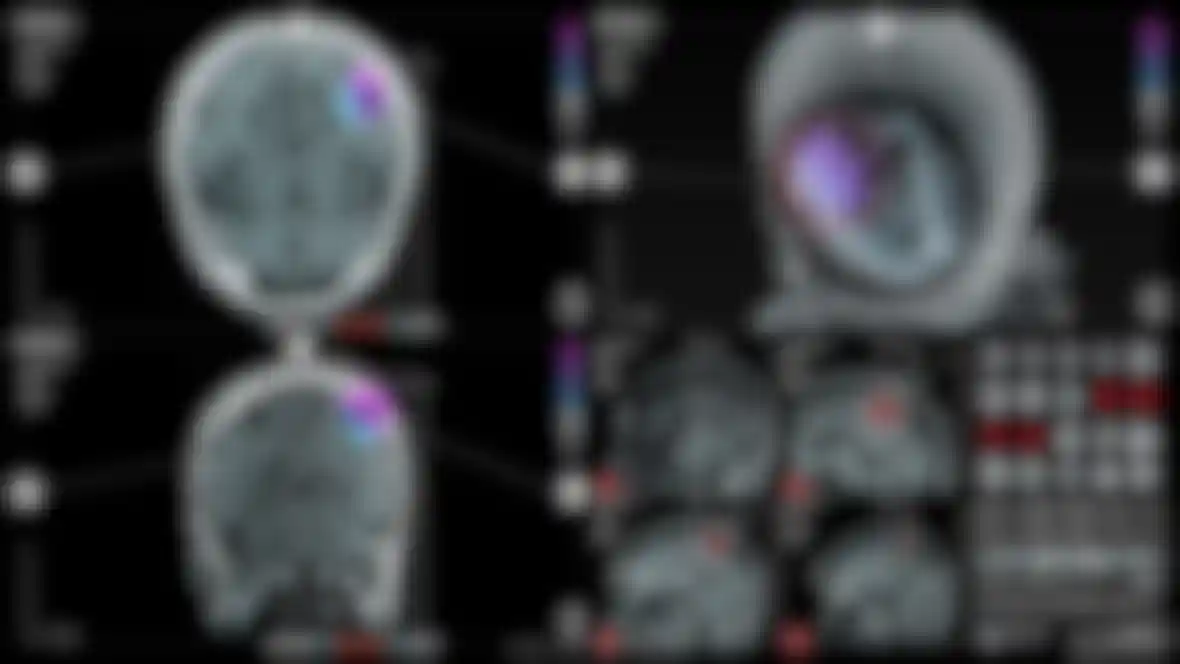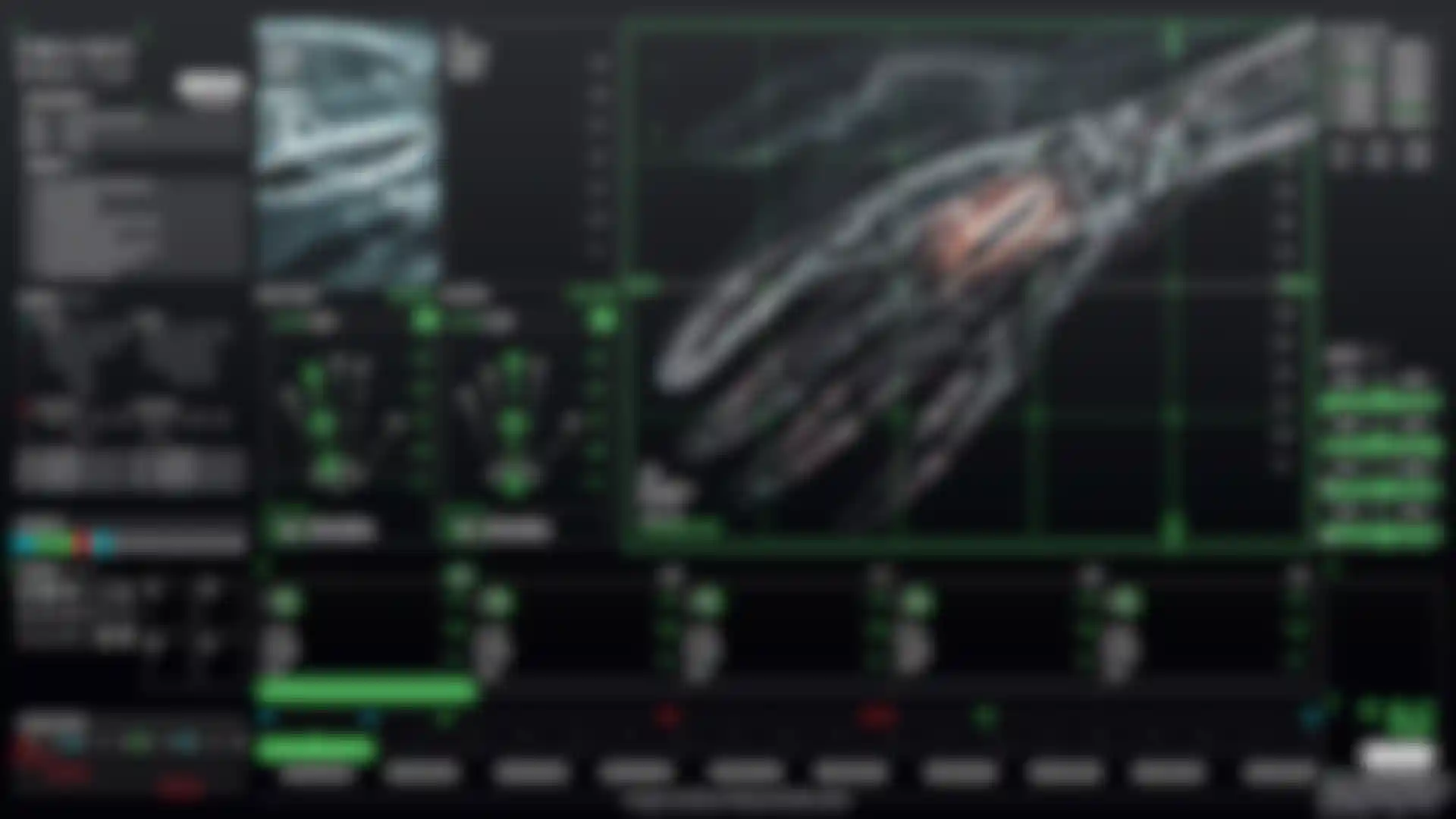
SPOV Helps Doctor Strange Live up to his Name The latest Marvel Studios movie required convincing medical elements - made in Cinema 4D - to sell its lead character's expertise.
The 14th entry in the Marvel Cinematic Universe sees acclaimed but arrogant neurosurgeon Stephen Strange losing the use of his hands in a horrific car accident. Robbed of his skills - as well as his notoriety and wealth - he sets off for Kathmandu on a quest to discover the mystical powers that will help him regain his purpose in life.
While the bulk of the movie is packed with kaleidoscopic visual effects, the beginning of the story remains grounded in reality with segments showing the good doctor at work and, after the car crash, being operated on himself. For these sequences, the production required some authentic-looking medical displays, showing Doctor Strange's groundbreaking neurological work plus a montage in which we see other surgeons trying to rebuild his broken hands.
The task was handed to London-based SPOV, a design studio in central London, whose portfolio includes creative development, user interface and motion graphics work for Call of Duty: Advanced Warfare, Titanfall 2 and Tom Clancy's The Division among others.
We spoke with Allen Leitch, founder and creative director and senior designer Adam Roche. Leitch explains how, after SPOV's success with videogame cinematics, they started chasing movie work and quickly landed a job on Mission Impossible: Rogue Nation. "We made a few friends on Mission Impossible, and one of those friends, Art Director Alan Payne, who's an art director - called us and said, 'There's a requirement on Doctor Strange'."
That requirement was a series of medical displays showing images of Strange operating on a patient with brain lesions as well as X-rays and scans of the doctor's own fractured hands. After creating some basic 'block-outs' in Illustrator, the team then began a dialogue with the client to highlight the right hierarchy and pinpoint key elements.
"Because you're in the movies, it's difficult for us to know what's important," says Leitch. "If it was a real-life product for a medical client they would dictate what's important for a doctor to have feedback on. In the blink of an eye you should look at a screen and be able to pull out the information that you need. In the movies, it's 'what does the audience need?'"

The team's initial port of call was various ready-made anatomical models but these proved to be less than ideal. "All the off-the-shelf medical products we were looking at as well as the ones the client was pointing us to were all really clunky when you got close to them – and we needed to get very close," says Leitch.
The models were low-poly and either too smooth or with very low levels of detail, making them not very convincing. The team had little choice but to up-res the meshes, adding detail with Cinema 4D's sculpting toolset. "It took a lot of just very subtle sculpting from Adam and Julio [Dean, SPOV's technical director, who is based in Barcelona]. We've used things like Mudbox and ZBrush in the past but in this case the core Cinema 4D sculpting tools did the job."
"We just worked on top of the mesh," adds Roche. "We didn't bother to retopologize it because we always knew it was going to be in quite a stylized treatment. So for this, it didn't matter too much. Actually, some of the lower fidelity of the mesh kind of worked in our favor to look like an actual scan."
To create the traditional X-ray appearance, the team employed an inverted Fresnel shader in the material's Transparency channel, which instantly gives objects that translucent, ephemeral look. When combined with multiple layers and objects, the effect is thoroughly convincing.
Another crucial element of the sequences is the effect of revealing layers of skin and bone, much like a CT scan, which was achieved using a combination of Boolean operations and Cinema 4D's Proximal shader. This lets you apply an effect – such as localized color or an alpha region – controlled by the proximity of another object or null. As the distance between the two is reduced, so the effect becomes more pronounced.
"We rendered black-and-white with the Proximal shader," says Roche, "then used it as a matte in After Effects. It was a combination of Booleans and the Proximal shader. We were able to cut away but also bring back some of the transparency in the other layers."
"Proximal's a lot more subtle than hard Boolean," adds Leitch. "I think that's why we employed it here. It's also how you project it onto the mesh as well, the angle of attack. Part of the trick here was to match where Doctor Strange puts his probe – we had to match the same angle."
Another option for the cutaway shots was to use the Cinema 4D camera's Near and Far Clipping planes. Accessed from the Camera object's Details tab, clipping simply tells the camera to render only the objects or parts of objects that lie within that region. And by animating the clipping planes you can cut into an object, revealing the elements within, much like a Boolean operation. All these techniques were used to generate various layers, which were then composited and softened in After Effects.
Other tools used include Cinema 4D's Hair tools – although not in any conventional way, as Roche explains Roche. "We used it on splines as a very efficient way to render how you would a Sweep, for example. Instead of using a shader on it, we'd normally use a Hair material. But you can also render out a points pass on the geometry, which also gives a nice point cloud texture."
In the latter case it's simply a matter of adding a Hair shader to an object that has a transparent material. With a nice bright shade in the Color channel, and the length set to very low percentage, you can replicate a cool point cloud effect.
Insydium's X-Particles was also employed, says Leitch, but in this instance it was used to help create the arteries. The arteries were drawn as splines and then xpSplineMesher was used to mesh them into a form that they could be rendered.

Another unusual inclusion was MoGraph, which the SPOV team is starting to use to render interface elements. "Whereas previously everything would be done in Illustrator and After Effects, we're now rendering a lot of UI elements straight out of Cinema 4D," says Leitch, saying that it's an idea they picked up from the UI work done by Bradley Munkowitz on Oblivion. "It was a bit of an eye-opener for me," he continues. "It made me think there's more to the MoGraph toolset than I'd previously thought. If you start rendering MoGraph stuff in an orthographic view, it really adds an element to our UI work that previously we weren't really employing it for."
SPOV's animations were combined with real X-rays provided by the production and it's a testament to their work that it's almost impossible to tell what's real and what's CG. But the project wasn't without its challenges: "For me, it was the modeling," says Leitch. "Adding the detail. There are a lot of tools out there in the world to cut corners and make things easy. But to get the believability here, you had to do the work. You had to put the time in. I think that is what sets it apart and gives it the believability or authenticity that is worthy of a film like Doctor Strange."
Leitch admits to being a big fan of Cinema 4D. "It goes back to us being a design company," he explains. "We're not a VFX company; we're not really a CG company. We tend to work with talented designers and animators; we don't tend to work with CG specialists. We don't bring in a lighting designer. We don't bring in texture artists. Basically, what usually happens in here is somebody is given a shot, saying, 'That's your shot, and you need to generate pretty much everything in that shot – the UI elements and the CG elements.' For the most part, at SPOV, people have a shot or a sequence – and it's theirs. You complete it from start to finish. Cinema 4D allows people who are not specialist CG artists to generate quality 3D content."
The SPOV team would like to give a shout out to art director Alan Payne, production designer Charlie Wood, and the on-set supervision team at Compuhire.
All images courtesy of Marvel Studios 2016.
SPOV Website:
www.spov.tv

